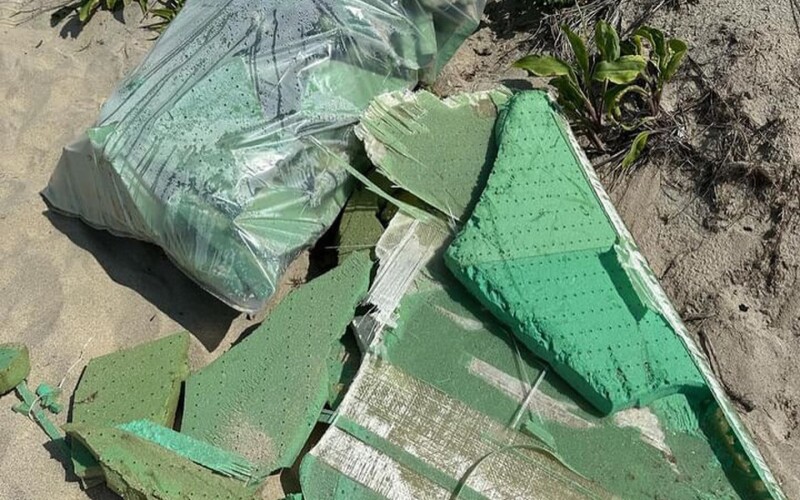Renewable energy advocates used to joke that unlike offshore oil production, the worst that could happen with turbine arrays would be a “wind spill.”
No more. The July 13 turbine blade failure on Vineyard Wind’s machine AW38 dropped parts of 57 tons of fiberglass, balsa wood and resin coatings into the sea, with fragments washing up on beaches – first from Nantucket, then onward to from Cape Cod to Montauk, at the height of summer tourism.
One month after the fracture, the federal Bureau of Safety and Environmental Enforcement (BSEE) issued an “updated suspension order” to allow some work to resume on the planned 62-turbine, 806-megawatt rated array. The order continued to block new blade installation or power production at the 24 GE Vernova turbines installed before the break.
Reports of broken blade pieces drifting across southern New England waters were cited by opponents off the Atlantic Shores project off New Jersey as proof of their fears that building turbine arrays starting 8.7 miles off their beaches will endanger their own tourism industry.
“We saw what happened in Nantucket. God only knows what would happen when we get a cat (category) 3 or any hurricane,” said Rep. Jeff Van Drew, R-NJ, a fierce critic of BOEM and the wind industry. He predicted “a blizzard of fiberglass” if turbine blades break apart in a severe hurricane.
The Vineyard Wind incident is “offshore wind’s version of Three Mile Island,” said Amy DiSibio, a board member of ACK for Whales, a Nantucket-based group that sued in federal court attempting to stop Vineyard Wind construction.
Wind energy supporters offered scant pushback to the furious reactions.
“Those who are responsible for the problems with the wind turbine should obviously fix it, clean up their mess, and make sure it doesn’t happen again. But it’s a heckuva lot better than an oil spill,” said Johanna Neumann, senior director of Environment America’s renewable energy campaign.
On Aug. 13 Nantucket municipal officials posted a 25-point summary of the crisis – in part an explainer of their community’s position, and a critique of the developers and the Bureau of Ocean Energy Management.
“We have seen little balance in BOEM’s permitting approach to offshore wind, which significantly favors industry developers, including foreign-government owned developers, over the legitimate concerns of U.S. coastal communities and Tribal Nations,” the Nantucket Select Board wrote.
“We on Nantucket deeply appreciate the existential threat of climate change. We also appreciate that leaders from both parties are exerting intense political pressure on a woefully understaffed federal agency. Nonetheless, we think BOEM does the green energy movement a grave disservice by shortchanging its federal duties.”
Offshore wind critics contend there are chances for a liquid pollution spill from ocean turbines as well. The potential is taken seriously by federal agencies.
In October 2023 representatives from BSEE, the Coast Guard and National Oceanic and Atmospheric Administration participated in a tabletop exercise hosted by Vineyard Wind in New Bedford, Mass., and facilitated by representatives from the National Response Corporation.
The drill scenario posed a release of 20,000 gallons of dielectric fluid, and “was designed to provide the Vineyard Wind incident management team with the chance to walk through a hypothetical spill scenario,” according to a NOAA account of the exercise. “It was the first time that an exercise pertaining to the offshore wind industry, which is rapidly developing in New England, was conducted.”




